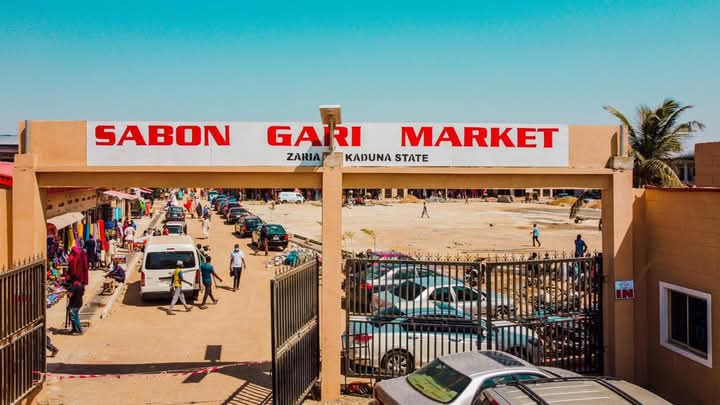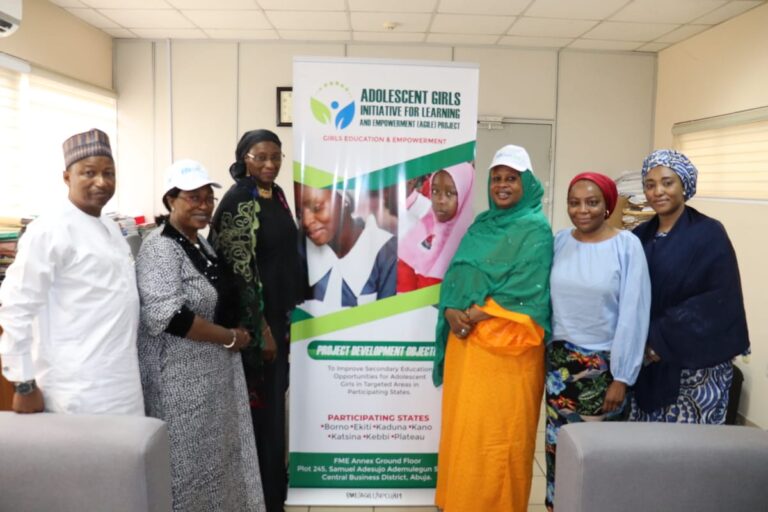Harnessing the Rains: Rainwater Harvesting as a Vital Strategy for Addressing Water Scarcity in Nigerian Communities, Using Sabon Gari, Zaria as a Case Study. By Abisoye K. M.

Harnessing the Rains: Rainwater Harvesting as a Vital Strategy for Addressing Water Scarcity in Nigerian Communities, Using Sabon Gari, Zaria as a Case Study.
By Abisoye K. M.

Water scarcity and inadequate quality are significant constraints to development, affecting health, agriculture, food security, and economic growth, particularly in tropical regions like Nigeria (Nelly, 2010). Access to safe water is fundamental to hygiene, sanitation, and gender equity, with 71% of household water collection tasks often falling on women and girls (UN, 2008a). Nigeria faces critical water challenges, classified as a water-scarce country with annual supplies below 1000m³/person (UNEP, 2002).

Nigeria’s population of approximately 180 million has 75% living in rural areas reliant on rain-fed agriculture (Nelly, 2016), with rainfall patterns marked by high variability. The World Health Organisation (WHO) estimates 1.8 million deaths annually due to lack of access to safe water, sanitation, and hygiene, with 99.8% occurring in developing countries (Nath et al., 2006). Climate change exacerbates these issues, threatening food security in sub-Saharan Africa, where agriculture is predominantly rain-fed (IITA, 1993).
Rainwater harvesting is a method of collecting and storing rainwater for agricultural and domestic use, particularly vital in arid and semi-arid areas (Hatibu and Mahoo, 2000). RWH techniques are applicable across agro-climatic zones but are especially suited to regions with 200-800 mm annual rainfall (Rebeka, 2006). Benefits include:
– Securing crop production in low-rainfall regions.
– Controlling soil erosion and land degradation (Mugerwa, 2007; Enfors, 2009).
– Groundwater recharge and flood control (Palmbac, 2004).
Using Sabon Gari, Zaria
Sabon Gari in Kaduna State as a case study, the community faces acute water scarcity, worsened by climate variability and erratic rainfall. This study examines rainwater harvesting techniques in Sabon Gari, focusing on:
1. *Socio-economic characteristics* of respondents.
2. *RWH techniques adopted* by households.
3. *Factors influencing adoption* of RWH.
4. *Impact of storage tank materials* on water quality.

Let’s dive into the details about Sabon Gari in Zaria, Nigeria, based on the information available.
Brief About of Sabon Gari
– Sabon Gari came into existence between *1911 and 1914*, initially more than a small village.
– The *1917 township ordinance* and segregation policies shaped its current outlook.
– It was known by various names like “African” Township, New Town, and cantonment before being widely known as Sabon Gari.
– Over time, Sabon Gari transformed from a stranger’s settlement to a diverse area with *almost all major Nigerian ethnic groups represented*.
Geography and Geology
– *Underlying rocks*: Basement complex (igneous/metamorphic, 48%) and sedimentary rocks (52%).
– Comprises schist, gneiss, older granite; with sandstone, clay in southwest.
– *Topography*: Undulating plains, hills, dissected terrain; prone to *gully erosion*.
– Geology includes high-grade metamorphic/igneous rocks of Precambrian Age (gneiss, migmatites, granites).
Climate
– *Two main seasons*: Humid rainy season (April-October) and dry season with harmattan interlude.
– *Rainfall*: 1160mm to 1600mm annually.
– *Temperatures*: 30-32°C (day), 24-25°C (night) in rainy season; up to 40-45°C in dry season.
Vegetation
– Includes grasses, trees (locust bean, shear butter, mahogany, cashew, mango), shrubs.
– *Uses*: Grazing, firewood, timber, construction, palm products, fruits.
– Vegetation thrives in wet season, withers in dry season; influenced by rainfall/topography.
– *Forest reserves* support sawmills for construction planks.
Major Economic Activities
– *Farming*: Crops like maize, sorghum, rice; livestock potential (NAPRI at Shika offers support).
– *Trading*: Small-scale enterprises (motor mechanics, tailoring, repairs).
– *Pottery*, civil service, fishing also mentioned.
– Potential for commercial grain agriculture, livestock (beef, mutton, pork, poultry, dairy).
Industries
– Concentrated in Zaria and Kaduna; heavy manufacturing in Kaduna.
– *Government policy influences location* (example: textile industries in Kaduna).
– Two textile industries in Zaria; none in cotton-producing towns like Soba.
Population Structure and Distribution (1996 census)
– *Kaduna State population*: 5,001,258.
– About a third live in urban centers like Kaduna and Zaria.
– *Seasonal labor migration*: Rural-urban movement, especially young males.
– *Near 1:1 male/female ratio* across LGAs.
– Skilled graduates provide labor for growing industries.
Patterns of Human Settlement
– Tied to historical, political, socioeconomic forces (pre-colonial to post-colonial).
– *Extended family compounds* evolved into “Garuruka” (towns) for security.
– Development of infrastructure like roads, railroads influenced growth.
– *Urban primacy*: Zaria’s growth linked to education (Arabic studies, institutions like NAPRI).
Challenges
– *Urban unemployment*: Unskilled youth (16-30 years) jobless/underemployed in Zaria.
– *Migration patterns*: Children (Qur’anic schools), adults (“Fadama” farmers).
Rainwater, though initially clean, risks contamination from roof materials, storage containers, and environmental factors (Polkowska et al., 2001). Storage tank materials affect water quality; metal tanks may corrode, leaching heavy metals like iron, posing health risks (Jawas et al., 1988; Ziadat, 2005).
The research aimed to
– Examine socio-economic profiles of respondents.
– Identify adopted RWH techniques in Sabon Gari.
– Determine adoption influencers.
– Assess storage tank material impact on rainwater quality.
– Bridges information gaps on RWH adoption and water quality in Sabon Gari, informing policymakers and planners on sustainable water management. Parameters assessed include pH, alkalinity, conductivity, turbidity, nitrate, hardness, and faecal coliform.
Implications for Policy in Nigeria
1. *Scaling RWH Adoption*: Policymakers can promote Rainwater Harvesting (RWH) as a complementary water source, especially in rural and semi-arid areas like Sabon Gari, Zaria.
2. *Infrastructure Support*: Government incentives for constructing RWH systems (roof catchments, storage tanks) could improve adoption, particularly for domestic and agricultural use.
3. *Water Quality Regulations*: Standards for storage tank materials and maintenance protocols are vital to ensure harvested water is safe for drinking and domestic use.
4. *Climate Adaptation*: RWH can mitigate climate variability impacts; policies integrating RWH into national water strategies align with climate resilience goals (IPCC, 2007).
5. *Community Engagement*: Awareness campaigns on RWH benefits for water security, agriculture, and health can drive uptake, considering 75% of Nigeria’s population lives rurally (Nelly, 2016).
6. *Funding and Partnerships*: Collaboration with NGOs, international agencies, and private sector can enhance RWH implementation, addressing funding gaps.
7. *Integration with Agriculture*: RWH supports rain-fed agriculture predominant in Nigeria, bolstering food security amid climate-sensitive production systems (IITA, 1993).
RWH Techniques Suitable for Nigeria’s Climate
Nigeria’s varied climate (arid/semi-arid north, tropical south) influences RWH applicability.
1. Roof Catchment Systems: Common for domestic water collection; effectiveness depends on roof material (corrugated iron, tiles) and cleanliness.
2. Ground Catchment: Direct runoff collection for agriculture; useful in areas with intense rainfall events.
3. *In-situ RWH: Techniques like micro-catchments (e.g., zaï pits) enhance soil moisture for crops in semi-arid zones.
4. *Storage Tanks*: Ferrocement, plastic, concrete tanks store harvested water; material choice impacts water quality.
5. *Contour Bunds/Ridges*: Agricultural techniques slowing runoff, boosting infiltration in variable rainfall areas.
6. *Floodwater Harvesting (Spate Irrigation)*: Capturing ephemeral flows for agriculture in arid regions.
7. *Jal Talai/Jalkund*: Traditional Indian/Nepali techniques inspire adaptable models for Nigeria’s variable climates.
Water Quality Parameters and Health Links
Key parameters affecting harvested rainwater safety:
1. *pH*: Affects corrosivity; imbalance can indicate contamination.
2. *Turbidity*: High levels suggest particulate contamination, shielding pathogens.
3. *Faecal Coliform*: Indicates bacterial contamination (e.g., E. coli), risking diarrheal diseases.
4. *Nitrate*: Elevated levels linked to agricultural runoff, health risks (methaemoglobinaemia in infants).
5. *Total Hardness*: Reflects calcium/magnesium ions; extreme levels impact taste, scaling.
6. *Electrical Conductivity*: Indicates dissolved salts; high levels affect palatability.
7. *Heavy Metals*: Leaching from storage tanks (corrosion) poses toxicity risks (WHO guidelines).
– *Health Risks*: Contaminated water linked to diarrhoea (1.5 million child deaths/year, UN 2008b), cholera, typhoid.
– *WHO Guidelines*: Benchmarks for drinking water quality parameters.
Climate Change Impacts on Nigerian Water Resources
1. Rainfall Variability*: Increased unpredictability affects rain-fed agriculture dominant in Nigeria (IITA, 1993).
2. Droughts/Floods: Semi-arid areas like northern Nigeria vulnerable; 71% of Tanzanian disasters are droughts/floods (Hatibu & Mahoo, 2000), indicating regional parallels.
3. *Temperature Rise*: Evaporation increases, altering water balances.
4. Population Pressure: Nigeria’s 3%/year growth (World Bank, 2011) heightens water demand amid climate stress.
5. Agricultural Vulnerabilit: Sub-Saharan Africa’s rain-dependent farming threatened (IPCC, 2007).
6. Groundwater Recharge: Variable rainfall impacts aquifer replenishment.
7. Adaptation Needs: RWH, efficient water management critical for resilience in vulnerable communities (Sabon Gari case).
8. Extreme Events: Intensified floods/droughts strain infrastructure; adaptation strategies essential.
Conclusion
With Nigeria’s growing population (3%/year, World Bank 2011) and climate pressures, RWH offers potential for improving water access. Understanding local adoption factors and ensuring safe storage are critical. Findings may guide interventions in Zaria and similar Nigerian contexts facing water stress.
Recommendation
Sequel to the findings of this study, the following key recommendations have been proffered:
The borehole technique and shallow wells ranked as lowest techniques in terms of preferences because it requires engineering skills to cite them. Household members especially farmers have to be trained to adopt such techniques as well as the provision of engineering skills and funds are required.
Relevant agencies should put more emphasis on education and awareness creation to increase the adoption of reliable water harvesting techniques.
There is an urgent need for government and organizations to come in to hold the community big sizes of land to increase the dependence on their farm incomes as well as increase adoption of the techniques.
The study recommends the construction of more enclosed underground water storage tanks closed to the community to minimize wasting time and energy.
The Zaria local government authority should Provide more simple materials either at lower cost in the market or on long-term credit basis for those who have not applied the roof water tanks.
The use of first flush diverters and filters like the “guinea worm filters” should be promoted and incorporated in storage tanks. The filters could be used to treat the supplementary contaminated water supplies as well.
References
Hatibu, N., & Mahoo, H. (2000): Mentioned in the context of RWH for agricultural and domestic use, particularly in arid/semi-arid areas.
Nelly, 2010: Cited regarding water scarcity constraints in tropical regions like Nigeria.
Nelly, 2016: Referenced on Nigeria’s population demographics and rural reliance on rain-fed agriculture.
Rebeka, 2006: Mentioned concerning RWH applicability in regions with 200-800 mm annual rainfall.
UNEP (2002): Nigeria classified as water-scarce with annual supplies <1000m³/person.
UN (2008a): Cited on gender equity and 71% of household water collection tasks falling on women/girls.
UN (2008b): Referenced on 1.5 million child deaths/year from diarrheal diseases linked to lack of safe water/sanitation.
WHO (via Nath et al., 2006): Estimates 1.8 million deaths annually due to lack of safe water, sanitation, hygiene; 99.8% in developing countries.
IITA (1993): Mentioned regarding sub-Saharan Africa’s rain-fed agriculture vulnerability to climate change.
IPCC (2007): Cited on climate change impacts and adaptation aligning with RWH for resilience.
Mugerwa, 2007; Enfors, 2009: Referenced on RWH benefits like controlling erosion and land degradation.
Palmbac, 2004: Mentioned regarding RWH for groundwater recharge and flood control.
Polkowska et al., 2001: Cited on rainwater contamination risks from environment, roof materials, containers.
Jawas et al., 1988; Ziadat, 2005: Referenced on storage tank materials impacting water quality, corrosion risks.
World Bank (2011): Nigeria’s population growth at 3%/year, heightening water demand.
Abu-Awwad, A. M. and Shatanawi. M. R., 1997. Water harvesting and infiltration in arid areas affected by surface crust: examples from Jordan. Journal of Arid Environments 37, pp. 443 – 452.
Abdul-Hameed (2008). Rainwater Harvesting for Domestic Uses in two Palestinian
Rural Areas with Emphasis on Quality and Quantity [Masters thesis],
Birzeit University,Palestine.12-26pp.
African Development Bank (AfDB), 2007. Assessment of best practices and experiences in rainwater harvesting. Rainwater Harvesting Handbook. Tunis: AfDB.
Alem, G.2003, Water Harvesting: A Water Security Strategy For Mitigating The Impact Of Drought In Ethiopia. Water Security in the 21 St Century. pp 1-5.
Arjen de Vries, 2002. River bed water storage – low cost and sustainable. Availablat: http//:www.aqfax.net. Reporting science in Affrica. Kitui district, Kenya December 2002.
Ashton PJ. 2002. Avoiding Conflicts over Africa’s Water Resources. Ambio 31(3): 236-242.
AGA (AngloGold Ashanti) 2007. Environmental Laboratory Manual. 5-45pp.
Alford, D. (2007), Impact and potential of self supply in Amuria district Uganda
[Master’s thesis]. Cranfield University, UK. [www.rwsn.ch], (accessed 20-08-2010).
Allison, H. (2007). Clean water song hits Ghana. Science direct. 2-7pp.
Anon (1992). Ashanti Mine Expansion Project; Environmental Impact Assessment. Jay Minerals Services Limited. 1-6pp.
Antonovics, J., Bradshaw, A.D. and Turner, R.G. (1971). Heavy metal tolerance in plants. Adv. Ecol. Res., 7:1-85pp.
APHA (American Public Health Association) 1992. Standard Methods for the Examination of Water and Wastewater, 18th edition; 1-4pp.
APHA (American Public Health Association) 1998. Standard Methods for the Examination of Water and Wastewater, 20th edn. Washington, D.C.
Appiah, F. (2008). Physicochemical Analysis of Roof Run-off in the Obuasi Area
[Master‟s thesis]. KNUST, Kumasi, Ghana. 31-35pp.
Ariyananda (2003). Health risks due to drinking domestic roof water harvested, Paper presented at XI IRCSA conference, August, 2003.
Asante, F., Berger, T., Engel, S., and Iskandarani, M. (2002) Water security in the Ghanaian Volta Basin: Patterns, determinants, and consequences, Quarterly Journal of International Agriculture, 41, (1/2), 145-167pp.
Aucour, A. M., Tao, F. X., Moreira-Turcq, P., Seyler, P., Sheppard, S. and Benedetti, M. F. (2003). The Amazon River: Behavior of metals (Fe, Al, Mn) and dissolved organic matter in the initial mixing at the Rio Negro/Solimões confluence.
Chemical Geology, 197: 271-285pp.
Bancy, M. Mati, M. M. and Alex, O., 2006. Promoting rainwater harvesting in eastern and southern Africa, available at: (http://www.worldagroforestry.org). Nairobi, Kenya
Barghouti, S.; G. Le Moigne. 1990. Irrigation in sub-Saharan Africa: The development of public and private systems. World Bank Technical Paper No. 123. Washington, D.C.: World Bank.
Barron, J. ed., 2009. Rainwater harvesting: A lifeline for human well-being. Sweden: UNEP/SEI.
Boko M, Niang I, Nyong A, Vogel C, Githeko A, Medany M, Osman-Elasha B, Tabo R and Yanda P. 2007. Africa Climate Change 2007: Impacts, Adaptation and Vulnerability.
Boyd, C and Turton, C. eds., 2000. The contribution of soil and water conservation to sustainable livelihoods in semi-arid areas of Sub-Saharan Africa. London: Overseas Development Institute.
Barnes, D. A. (2009). Assessment of Rainwater Harvesting in Northern Ghana [Unpublished Master‟s thesis]. Massachusetts Institute of Technology
University, Ofarizona. 13-71pp. [www.libsearch.com/view/57734], (accessed 20-10-2010).
Biney, C. A. (1990). A Review of some Characteristics of Freshwater and Coastal Ecosystems in Ghana. Hydrobiologia: 45-53pp.
Brett, M. and Thomas, P.R. (2003). Better, Faster, Cheaper; Research into roofwater harvesting for water supply in low-income countries. ARCSA conference Austin, U.S.A.
Buor (2004). Water Needs and Women’s Health in the Kumasi Metropolitan Area, Ghana, Health Place, Vol. 10, 85-103pp.
Centre for Applied Research (CAR), 2005. Crop-livestock systems development in southern
Africa: priorities for future research, Botswana country report. Gaborone: CAR.
Chianu, J.N., Tsujii, H., 2004. Determinants of farmers’ decision to adopt or not adopt inorganic fertilizer in the savannas of northern Nigeria. Nutr. Cycl. Agroecosyst. 70, 293–301.
Chirwa, E., 2003. Sources of Technical Efficiency among Smallholder Maize Farmers in the
Southern Malawi, Wadonda Consult Working Paper WC/01/03, Chancellor College, Department of Economics, University of Malawi, Zomba, Malawi.
Critchley, W, and Siegert, K., 1991. A Manual for the Design and Construction of Water Harvesting Schemes for Plant Production. [html] Rome: FAO (Food and Agriculture organization
Camilli and Luis (2000). Rainwater Harvesting: constructing a cistern and gutter system using village technologies and materials (Maji Safi Rainwater Harvesting Manual).[www.scribd.com/doc/11630903/Maji-Safi-Rainwater-Harvesting-Manual-Kiswahili-English], (accessed 20-09-2010).
CGDHD (Central Gonja District Health Directorate) 2009-2010. Annual Health Report for 2009-2010. 18-19pp.
Cook J.D., Layrisse, M., Martinez-Torres, C., Walker, R., Monsen, E., and Finch CA. (1972). Food iron absorption measured by an extrinsic tag. J. Clin Invest 51:805-15pp.
Corwin (1996). A Waterborne Outbreak of Hepatitis E. Virus Transmission in Southwestern Vietnam. The American Society of Tropical Medicine and Hygiene, Vol. 54(6), 559-562pp.
Cresti, D. (2007). Analysis and design of household water catchment systems for rural Rwanda [Master‟s thesis]. MIT University, Cambridge, MA. 41-52pp.
CWQRB (California Water Quality Resources Board) 2005. Water Quality Criteria
.Publication No. 3-A.
Demeken, A. (2009). Determinants of Household Participation in Water Source Management: Achefer, Amhara Region, Ethiopia [Master‟s Thesis]. Cornell University, Ithaca, NY. USA. 21-24pp.
DES (Department of Environmental Services) 2007. Fluorine in Drinking Water.
Environmental Fact Sheet: 1-2pp.
Dickson, K. B. and Benneh, G. (2004). A New Geography of Ghana, 5th edition. Longmans Group Limited, London.
DTU (Development Technology Unit) 2000;2003. Domestic Roofwater harvesting technologies, Department of Engineering, University of Warwick, Coventry, UK. [www.eng.warwick.ac.uk/DTU/rwh/components1.html], (accessed 13/10 /2010).
DWAF (Department of Water Affairs and Forestry) 1998. Quality of Domestic Water Supplies. Assessment Guide, 2nd edn. DWAF, Department of Health and Water Research Commission, Pretoria, South Africa.
Eby, G. N. (2004). Principles of Environmental Geochemistry. Thomson-Brooks/Cole. Engmann, E. O. (1993). Rainwater harvesting in Ghana, challenges. 19th WEDC
November 2025
Contributors
Bulus, Y. and Oyetunji, T.
of Department of Geography, Faculty of Environmental Science, Nasarawa State University, Keffi, Nigeria





Congratulations